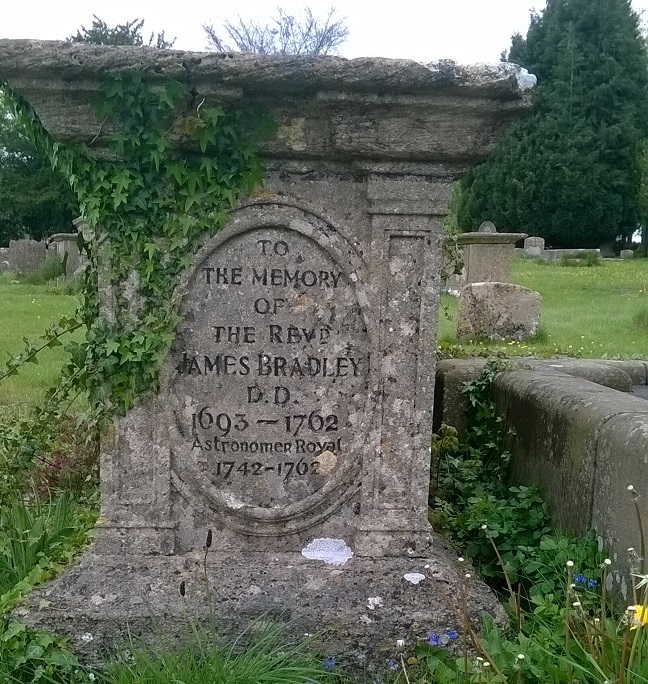James Bradley (1693 – 1762) was Gloucestershire’s own Astronomer Royal.
“ … the greatest astronomer who has ever held the office of Astronomer Royal in nearly three centuries”
– Sir Richard Woolley (Astronomer Royal 1956–1971)
 Born in Sherborne, Bradley was educated at Northleach Grammar School (located on the corner of the High Street and Farmington Road). From there he went to Balliol College, Oxford. His interest in astronomy was nurtured by his uncle the Rev James Pound. This gave him the opportunity to impress none other than Edmond Halley (of Halley Comet fame) – the then Astronomer Royal – with his ability to take miniscule astronomical readings. He initially saw his career serving the Church and became the Vicar of Bridstow in Monmouthshire, but James resigned this appointment when offered the Savilian Professorship of Astronomy in Oxford.
Born in Sherborne, Bradley was educated at Northleach Grammar School (located on the corner of the High Street and Farmington Road). From there he went to Balliol College, Oxford. His interest in astronomy was nurtured by his uncle the Rev James Pound. This gave him the opportunity to impress none other than Edmond Halley (of Halley Comet fame) – the then Astronomer Royal – with his ability to take miniscule astronomical readings. He initially saw his career serving the Church and became the Vicar of Bridstow in Monmouthshire, but James resigned this appointment when offered the Savilian Professorship of Astronomy in Oxford.
James Bradley’s Discoveries
The aberration of light
The discovery of the aberration of light – an astronomical phenomenon that produces an apparent motion of celestial objects about their true positions – was the first observational proof that the Earth orbited the Sun. Up until that time, Galileo’s observations of Io, Europa, Ganymede and Callisto orbiting Jupiter were used as the analogy that the Earth must therefore be orbiting the Sun. Kepler had showed that the motions of the planets could be far more easily explained as being due to elliptical motions around the Sun, rather than some complex combination of circular motions around the Earth. But the genius of Galileo and Kepler did not produce observational proof of the Earth’s movement. This left some scientists of the time in the disturbing position of trusting in a theory without the observational evidence to support it. In 1727, Bradley provided a classical explanation for the aberration of light in terms of the finite speed of light relative to the motion of the Earth in its orbit around the Sun, which he also used to make one of the earliest measurements of the speed of light.
The nutation of the Earth
By September 1747 Bradley had completed a series of observations that had taken him more than 20 years and resulted in the discovery of the nutation of the Earth’s axis. James discovered that the movement of the North Pole was not as uniform as previously thought. He traced this to the gravitational pull of the Moon’s orbit causing the North Pole to oscillate.
“The most brilliant and useful discoveries of the century”
– Jean Baptiste
Edmond Halley the Royal Astronomer died on 14th January 1742, leading to James Bradley being appointed the third Astronomer Royal one month later. Other honours included election as a Fellow of the Royal Society when 25 years old and he was awarded the Copley Medal in 1748.
There is little known of James Bradley’s private life. He married a daughter of Samuel Peach of Chalford, a marriage that produced one daughter. He passed away on 13th July 1762 aged 69 and is buried in the churchyard of Holy Trinity Church, Minchinhampton.
By John Harris FRAS
For the curious, more information:
Great Astronomers by Robert Stawell Ball (reprinted 2017), first published in 1896.
James Bradley, Third Astronomer Royal – Sir Richard Woolley, Q. J. R. Astron. Soc. (1963) Vol. 4, p.47
Astronomers Royal – Emily Winterburn
A&G News and Reviews (Dec 2012) – KAP Walsh
http://articles.adsabs.harvard.edu
http://cseligman.com/text/history/bradley.htm
